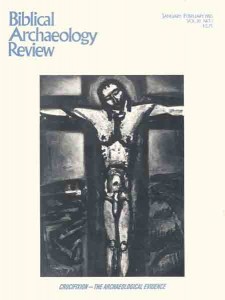
Crucifixion was practiced as early as the first millennium B.C. by Assyrians, Phoenicians and Persians; written accounts dating to 71 B.C. refer to crucifixions numbering in the thousands. Yet, only one victim of crucifixion has ever been discovered in an excavation. In 1968, Vassilios Tzaferis, an archaeologist with the Israel Department of Antiquities, examined a tomb near Jerusalem that had been accidentally opened by a construction crew. Tzaferis discovered the bones of two generations of a Jewish family that lived in Jerusalem about the first century A.D. A large nail piercing the heel bones of one skeleton led to the conclusion that this man had been crucified.
In “Crucifixion—the Archaeological Evidence,” Tzaferis reconstructs the prolonged and painful death of this person. Relating the evolution of crucifixion from a form of punishment for slaves to a method of execution, Tzaferis places the victim, a young man possibly punished for a political crime, in the context of his times.
Born on the Isle of Samos, in Greece, Tzaferis received a Ph.D. from Hebrew University in Jerusalem. He has directed many excavations, including those at Ashkelon, Tiberius, Beth Shean, Capernaum and at various locations in Jerusalem.
Already a library member? Log in here.
Institution user? Log in with your IP address.

